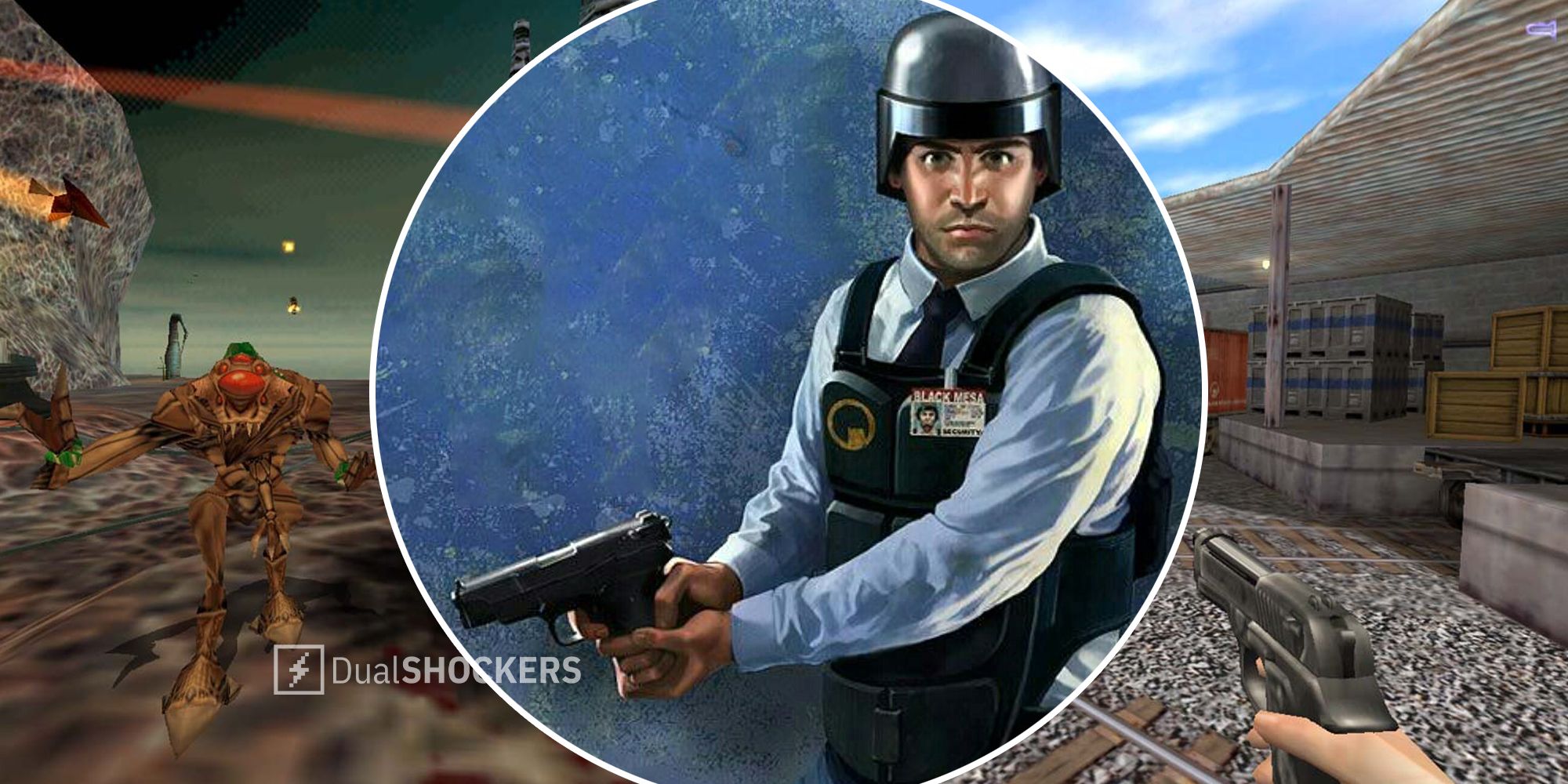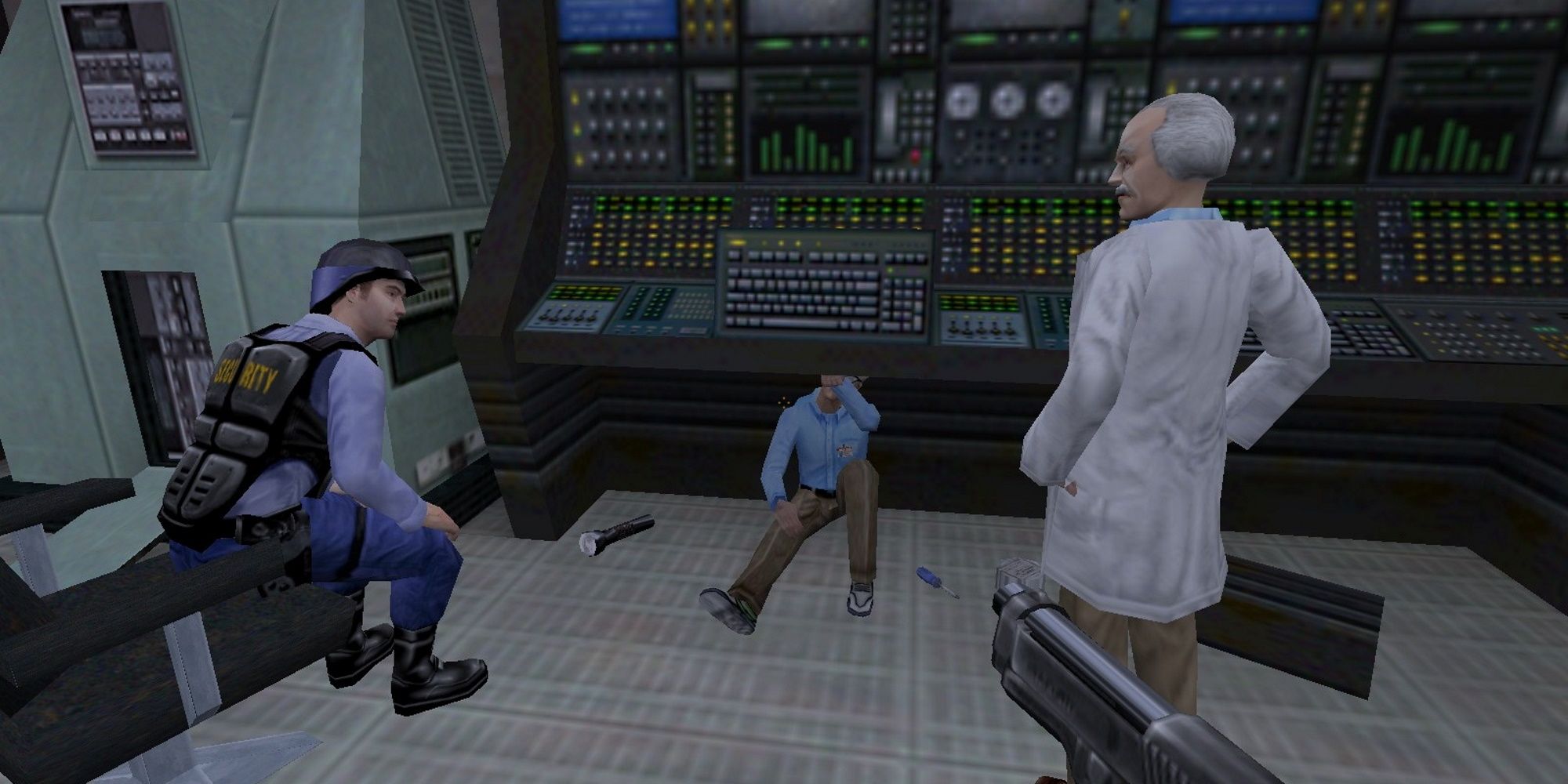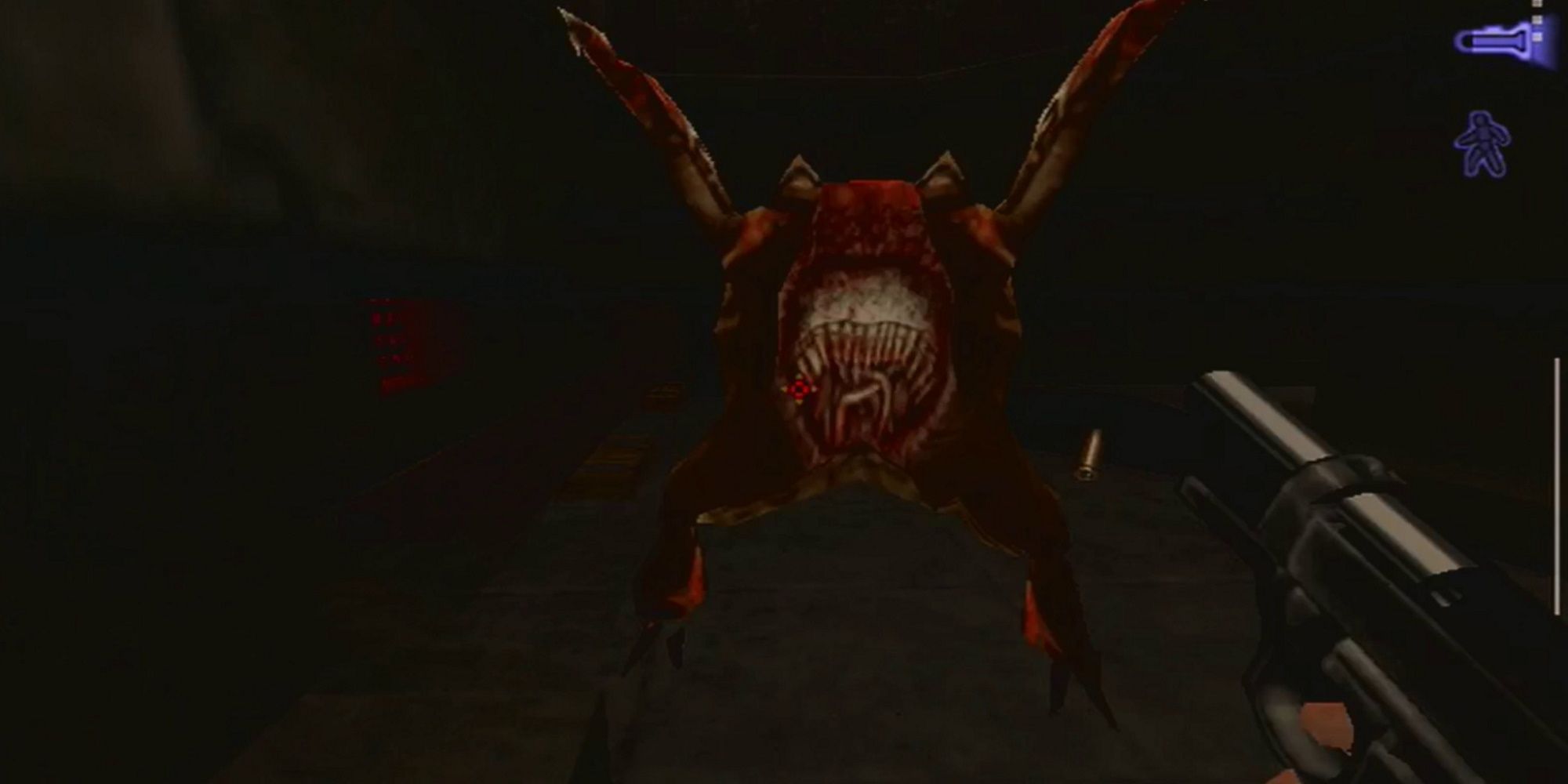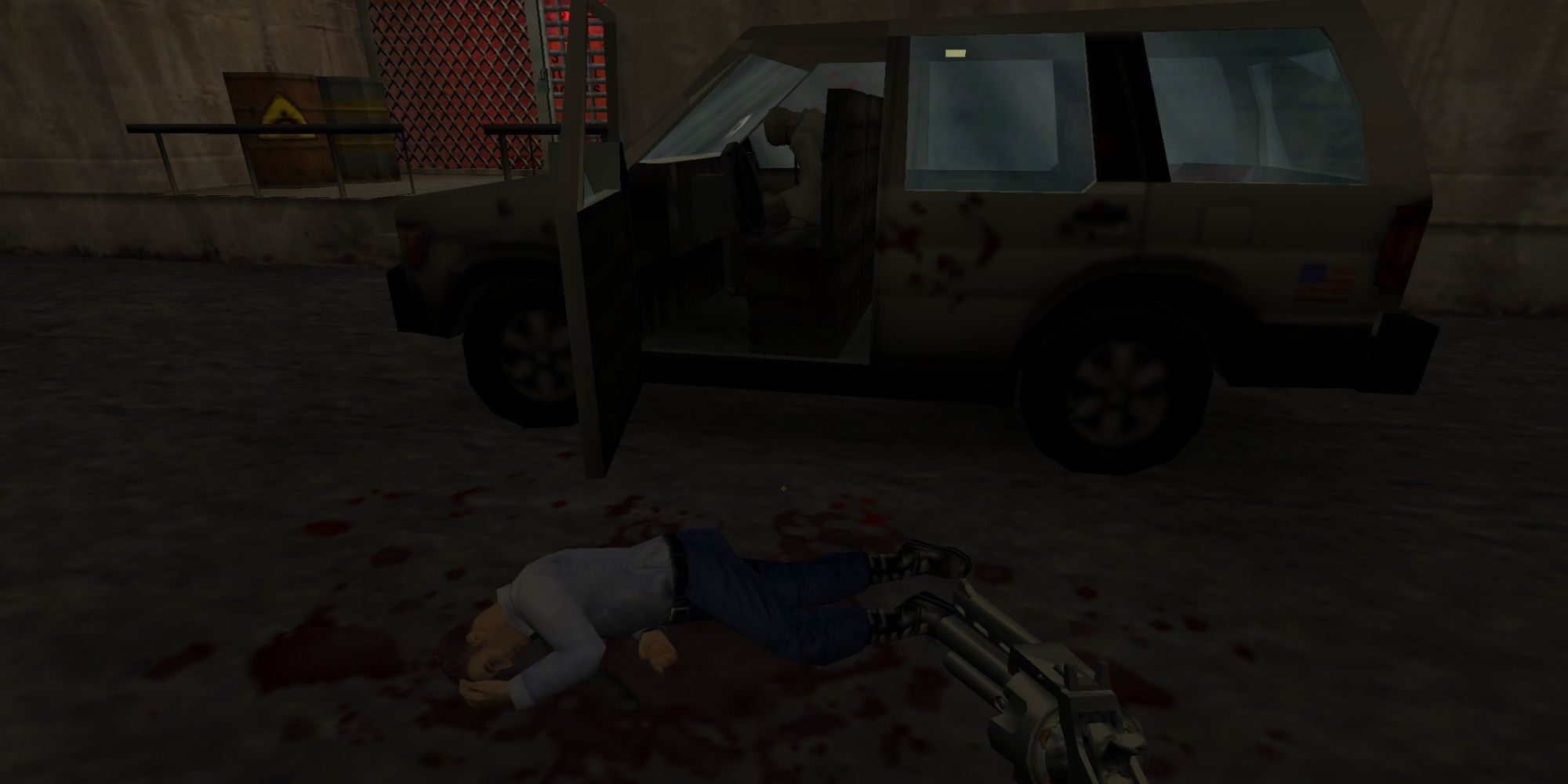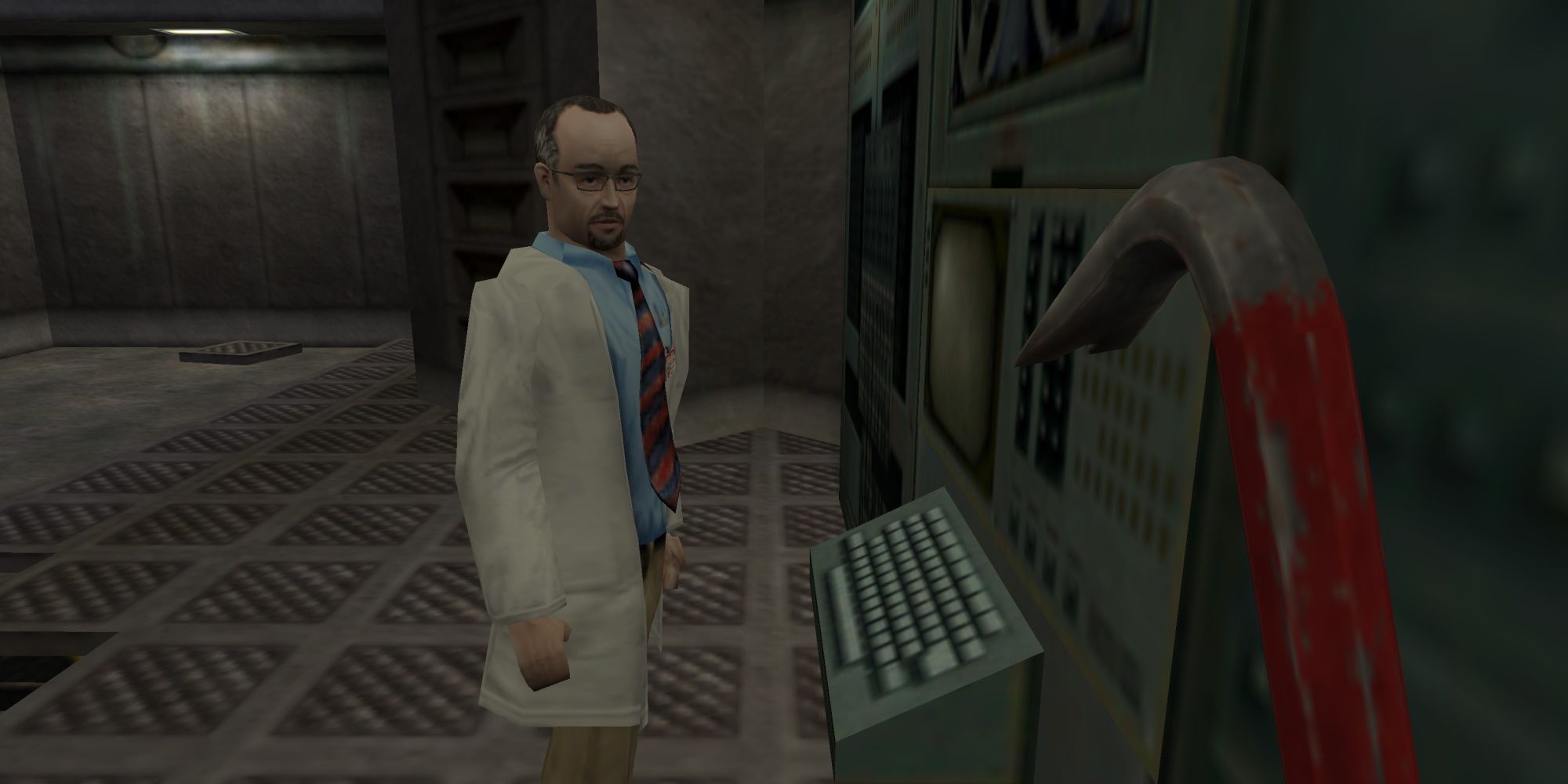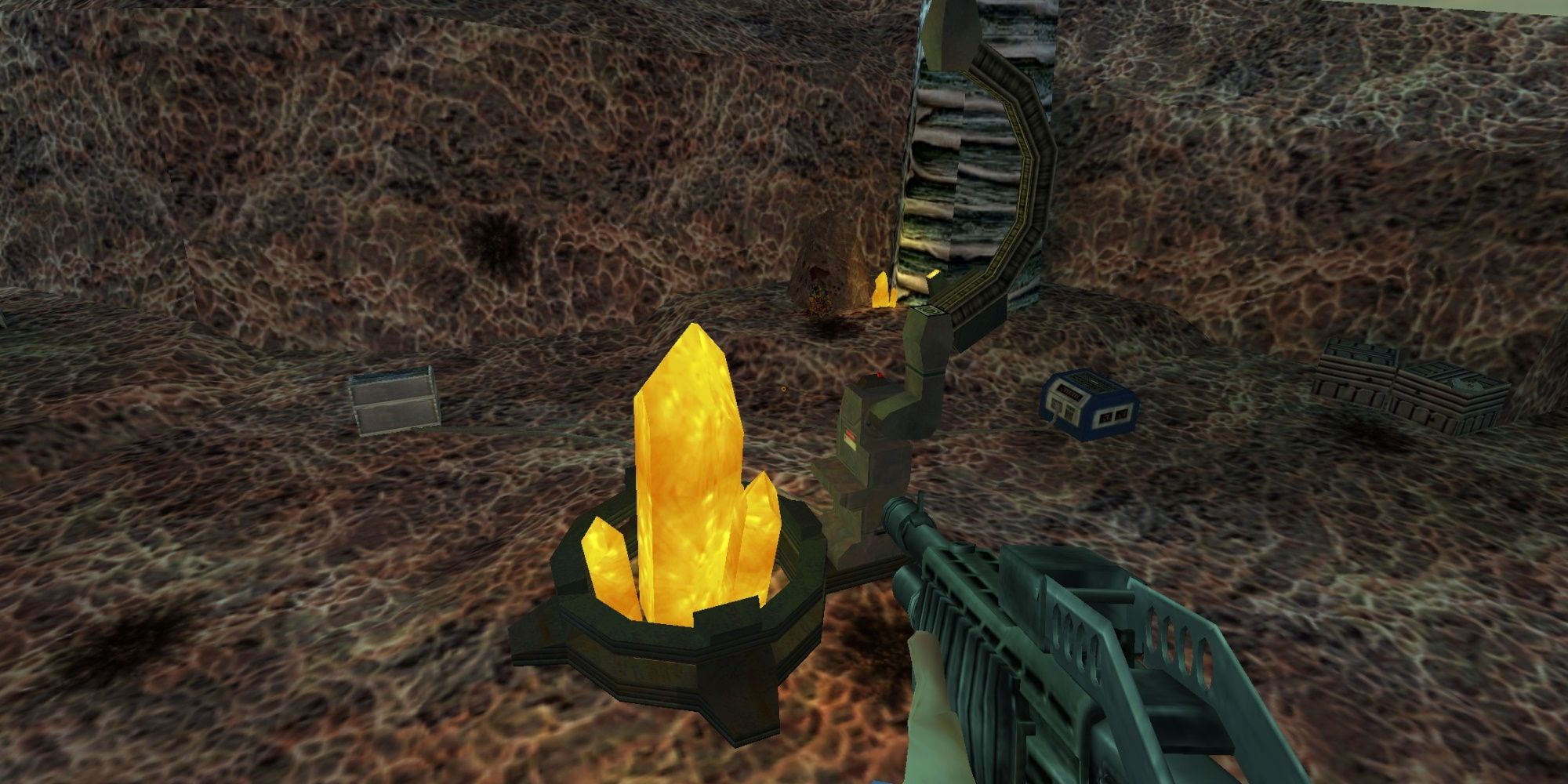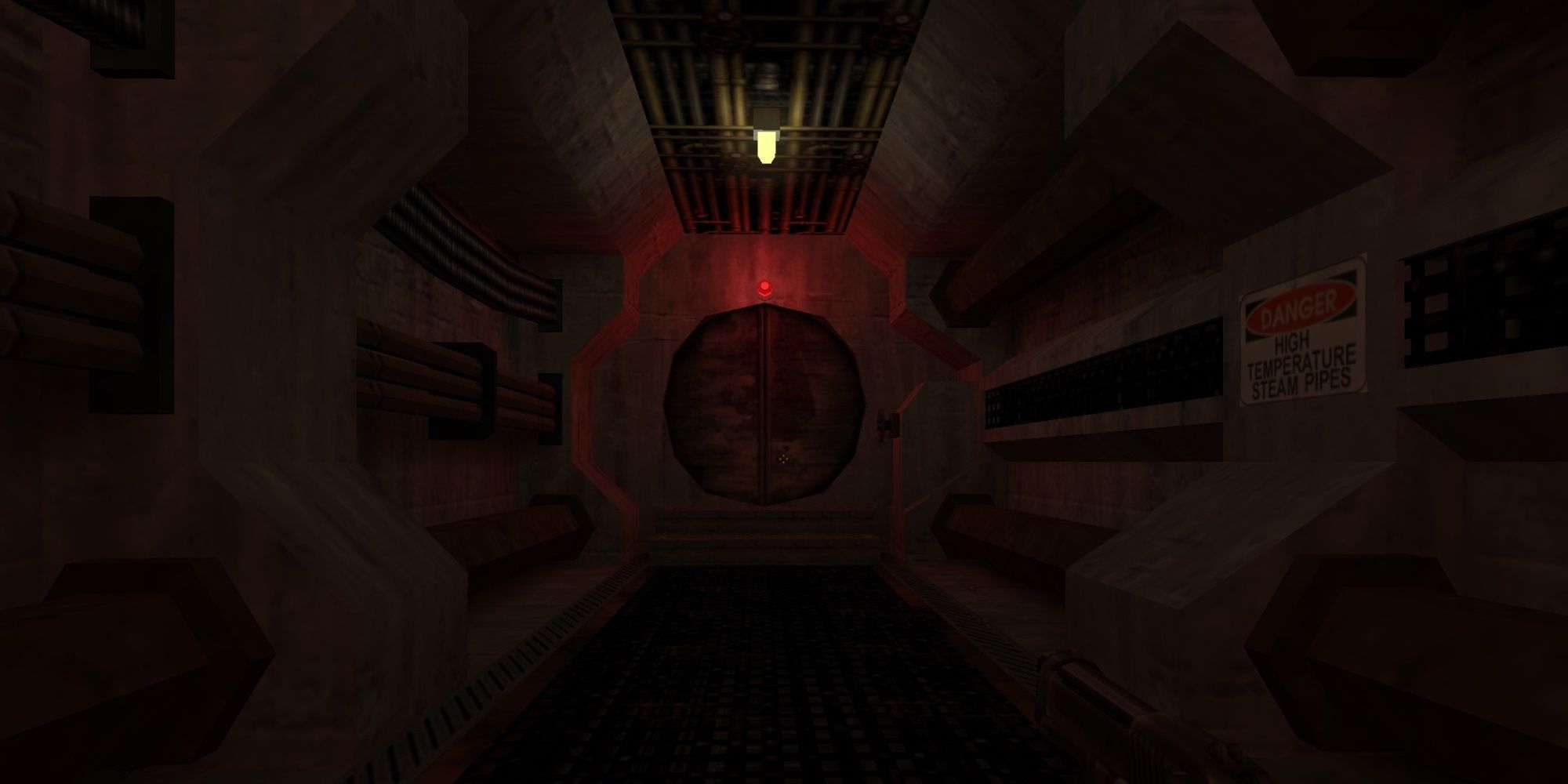The life of an NPC isn’t an easy one. They just want to end their shift and go home, but here they are stuck in the middle of a life-altering scenario as some player rips through the world, blasting zombie-aliens from who knows where. It’s rare for a game to explore what that feels like, but Half-Life’s PC expansions, Blue Shift and Opposing Force, offered two wildly different perspectives. The Black Mesa Incident may have been Gordon Freeman’s rise to heroism, but two other survivors weren’t so lucky.
Developed by Gearbox (yep, of future Borderlands fame), each expansion explores a wildly different take on the Black Mesa incident. Adrian Shepard in Opposing Force was as much a perfect opposite to Freeman as was his campaign. Designed more around spectacle, explosions, and gimmicks, Opposing Force expanded the Half-Life formula in a new direction. It was impressive for its time, but Opposing Force’s proto-Uncharted antics aren’t as important as Gearbox’s penultimate contribution to the Half-Life saga - Blue Shift.
Originally part of a near-complete Dreamcast port, Blue Shift stars Black Mesa security guard Barney Calhoun. Barney and a handful of scientists are trying to escape the facility in the wake of the Resonance Cascade that kicks off the entire series, in a story that runs parallel to the preceding campaigns (with some direct crossovers with Gordon’s).
Yet Blue Shift holds a contentious place in the Half-Life fandom. To be fair, it doesn’t have an obvious “awe” element like Opposing Force did. You’re just a security guard with no fancy spec-ops gear - a hard sell for a full-price expansion with the shortest run time coming out three years after Half-Life first launched.
Above Your Pay Grade
The improvements here are technical and subtle at first glance. Yet it’s these circumstances that gave Blue Shift some of the strongest content in an official Half-Life product. Blue Shift is basically Half-Life 2’s biggest improvements while retaining all the best parts of Half-Life 1 that got trimmed out in the sequel. All of that laser-focus-crammed into a two-hour ride.
There is almost no filler in Blue Shift. Everything is incredibly deliberate. There are optional areas with valuable rewards and hidden dangers ready to punish you for growing cocky. Blue Shift dedicates almost its entire runtime to making you feel a small man caught between forces far beyond your pay grade.
The entire opening sections play more like a horror-FPS. Precious medkits are spread out minutes apart as you’re beset by headcrabs so frequently that they actually have a chance at killing you. Barney’s got no HEV power suit or fancy laser guns. All you have are standard ballistics and explosives, with the odd armor pack here or there. Armor drops tend to give you more initial protection than an HEV, but enemies ambushing you constantly will make short work of that.
For a good third of the campaign, all you have weapon-wise is a mediocre pistol, a shotgun with too few shells, and the odd grenade. Every time there’s an edge in your arsenal, Blue Shift tosses in a new problem. If Half-Life was a homage to classic sci-fi horror, then Blue Shift is Die Hard with aliens. You were not trained for this, you are massively under-equipped for the enemies you’re going up against, and yet you keep surviving by force of will.
How rough a ride you’re in store for hinges on how recently you’ve played Half-Life. If it’s been more than a minute, Blue Shift can feel downright brutal on Medium. You’ll eventually get access to enough ammo and health to feel brave, but then Blue Shift throws a tank, biohazards, and swarms of aliens at you. No pressure.
Even when you're finally on the verge of escape, new threats come piling in. Blue Shift's level design is constantly squeezing in on you; elevators, box cars, sewers, gross mazes of tubes in the alien dimension of Xen - it's all suffocating. The facility is falling apart, offering only a sliver of hope that you might escape. As you defend a teleporter at the end of the game, less of the space is safe, with doors being shut off and enemies pressing in. If you waste too much time fighting, you can miss your window and be presumed Missing In Action.
This is one of those rare set-pieces that let you lose in such a way that makes narrative sense, and it wouldn't be surprising if some players initially thought this was the intended ending. This attention to narrative storytelling isn’t just in the functional design either. Aesthetically, Blue Shift’s levels have fantastic attention to detail.
Blue Shift’s environments feel lived-in, messy, and reactive. There’s incomplete work from structural expansions with bricks lying around, makeshift barricades, and torn up labs from battle damage. You’ll come across the aftermath of failed escape attempts by Black Mesa staff, who were cut down by the invading marines trying to cover up the invasion.
Even simple little logistical areas are beautifully realized, like the shipping area. Someone at Gearbox actually went to the lengths of filling crates with textures of the soda cans destined for all the soda machines throughout Half-Life. It’s totally unnecessary from a gameplay standpoint, yet truly sells the idea that you’re exploring a lived-in space. You’re running away from the center of a disaster in a real facility. Several carefully lit sections that demand the flashlight further emphasize this feeling of a luminal twist on familiar office surroundings.
Yet nothing compares to the cutting-edge (for the 90s) achievement that is Dr. Rosenberg. Where AI companions in the main game could only follow you within their loaded chunk of a level, Rosenberg is a constant companion until you get him to safety - very much your proto-Alyx Vance. Other than the mysterious G-Man, Rosenberg is the first persistent character players meet in all of Black Mesa, and his presence adds something else that would become crucial for the series going forward: a stronger emphasis on a story with specific direction.
Half-Life lets you play Gordon Freeman however you want. You can be a ruthless fiend who murders his colleagues to steal their weapons or the messiah that Half-Life 2 insists you were. It’s controversial among fans how Half-Life 2 stripped you of the ability to more freely engage with its cast, but Blue Shift toes the line.
Obviously you aren’t going to kill the people important to the story, because they’re your only way out of this mess. Instead of them being beholden to you, you’re relying on them. You can certainly find Rosenberg's hidden teleporter station by yourself, but without the man, no one's around to unlock the door. Without his lab partner Walter's advice, you'll have no idea to look for Rosenberg in the first place. Being selfish and cruel always costs you more than you'll gain. It’s motivation-based, only jamming in failstates for breaking the story if you’re really trying to troll.
It’s a more believable framing than the entire world somehow knowing about the Black Mesa incident, let alone the whole of humanity deciding you’re their messiah while you were away. The average player isn’t exactly going to identify with a nuclear physicist. Being a security guard at his wit's end while people smarter than him technobabble about a possible solution? Not hard to put yourself in that headspace.
A Glimpse Into the Future
Blue Shift always gives you something to fiddle with or explore when someone’s expositing (anticipating Valve’s later work). This is crucial for the final area of the campaign, as you’ll soon have to work the machinery yourself during the climax. As Rosenberg dives into the teleporter, it’s up to Barney to manipulate the machine last as enemies pour in from all sides. And that’s after navigating a brief stint in the alien border world of Xen - this time with reasonable level design.
Everything happens so fast, yet you’re never moving without a purpose. Blue Shift isn’t trying to break the mold of what Half-Life could be - it’s the essence of what makes it great. There might not be as many elaborate set-pieces or gimmicks thrown at you, but it gets the most it can out of the fundamentals.
Several key moments in Half-Life 2 were first explored here in Blue Shift: the last-stand with a turret, fighting a giant foe with RPGs in a train yard, head crab survival horror straight out of Ravenholm. Yet in most of those cases, Blue Shift retains the sharper balancing and reactive AI of the original game. That bite might not be as initially appealing, yet it adds a sense of tension the adventure needs. When you go on a second run through Blue Shift with foreknowledge, it never eases in tension - it’s just faster now because you know where to go.
Blue Shift is a strange game. From inception to release, nothing went according to plan. Yet in the years since, it’s easy to see why Valve felt it was still worth releasing. Everything in the Blue Shift campaign just clicks into place. It appears Valve felt the same, as Barney would famously appear as a major supporting character in Half-Life 2 and its expansions.
However tumultuous the series has been since, Blue Shift proved one thing above all else: Valve can count to three… so long as it’s an expansion pack!

